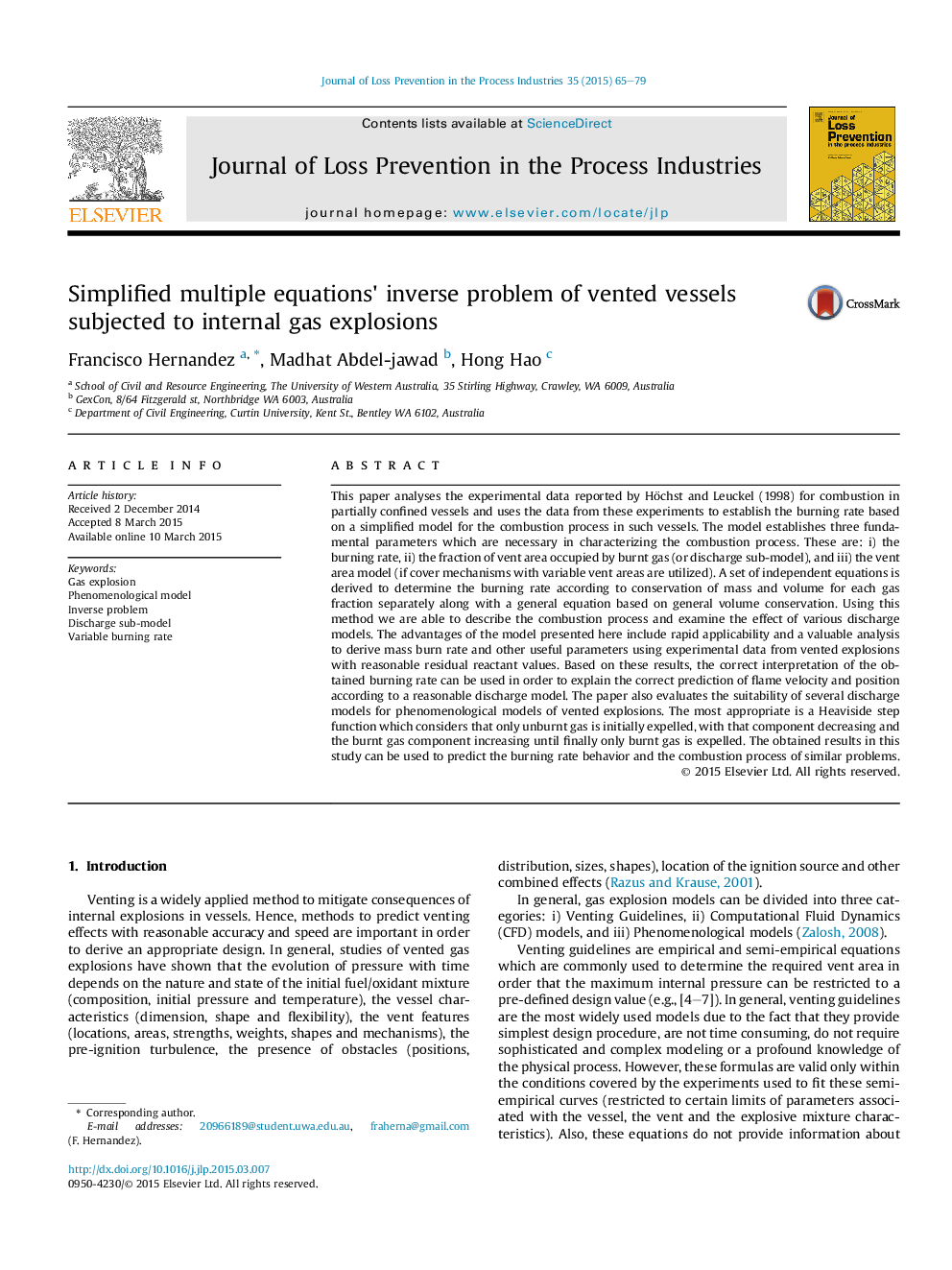| کد مقاله | کد نشریه | سال انتشار | مقاله انگلیسی | نسخه تمام متن |
|---|---|---|---|---|
| 6973422 | 1453273 | 2015 | 15 صفحه PDF | دانلود رایگان |
عنوان انگلیسی مقاله ISI
Simplified multiple equations' inverse problem of vented vessels subjected to internal gas explosions
ترجمه فارسی عنوان
معکوس معادلات معکوس ساده معکوس از معادلات معکوس کشتی های تحت فشار گاز انفجار داخلی
دانلود مقاله + سفارش ترجمه
دانلود مقاله ISI انگلیسی
رایگان برای ایرانیان
کلمات کلیدی
انفجار گاز، مدل پدیده شناسی مشکل معکوس تخلیه زیر مدل، نرخ سوزی متغیر،
موضوعات مرتبط
مهندسی و علوم پایه
مهندسی شیمی
بهداشت و امنیت شیمی
چکیده انگلیسی
This paper analyses the experimental data reported by Höchst and Leuckel (1998) for combustion in partially confined vessels and uses the data from these experiments to establish the burning rate based on a simplified model for the combustion process in such vessels. The model establishes three fundamental parameters which are necessary in characterizing the combustion process. These are: i) the burning rate, ii) the fraction of vent area occupied by burnt gas (or discharge sub-model), and iii) the vent area model (if cover mechanisms with variable vent areas are utilized). A set of independent equations is derived to determine the burning rate according to conservation of mass and volume for each gas fraction separately along with a general equation based on general volume conservation. Using this method we are able to describe the combustion process and examine the effect of various discharge models. The advantages of the model presented here include rapid applicability and a valuable analysis to derive mass burn rate and other useful parameters using experimental data from vented explosions with reasonable residual reactant values. Based on these results, the correct interpretation of the obtained burning rate can be used in order to explain the correct prediction of flame velocity and position according to a reasonable discharge model. The paper also evaluates the suitability of several discharge models for phenomenological models of vented explosions. The most appropriate is a Heaviside step function which considers that only unburnt gas is initially expelled, with that component decreasing and the burnt gas component increasing until finally only burnt gas is expelled. The obtained results in this study can be used to predict the burning rate behavior and the combustion process of similar problems.
ناشر
Database: Elsevier - ScienceDirect (ساینس دایرکت)
Journal: Journal of Loss Prevention in the Process Industries - Volume 35, May 2015, Pages 65-79
Journal: Journal of Loss Prevention in the Process Industries - Volume 35, May 2015, Pages 65-79
نویسندگان
Francisco Hernandez, Madhat Abdel-jawad, Hong Hao,
